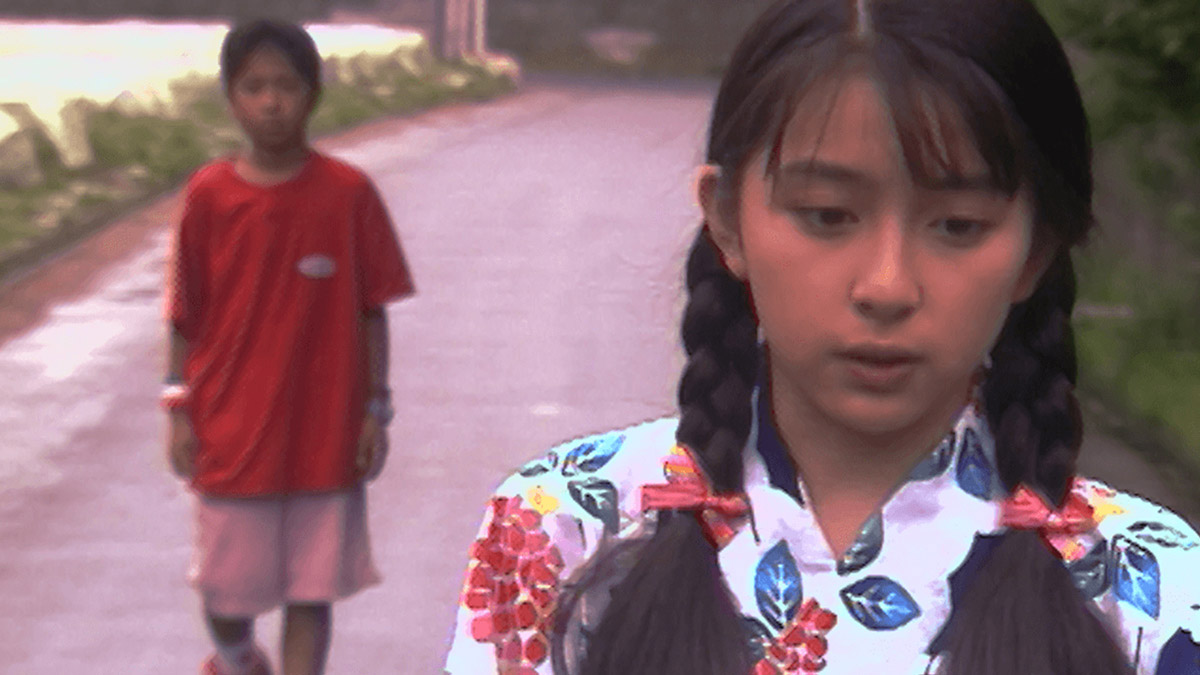
(c)Rockwell Eyes Inc.
``Fireworks, Should We See It from the Side or the Bottom?” A TV drama that has returned to its original home = movie theaters
Why was the TV drama released in theaters?
The topic of ``Fireworks'' continued to grow in 1994, as it was rebroadcast late at night to commemorate the Japan Film Directors Association Newcomer Award. It is necessary to pay attention to the activities of
In the summer of 1994, Shunji Iwai, Etsushi Toyokawa, and Tomoko Yamaguchi met in private. Iwai and Toyokawa met for the first time in `` Lunatic Love '' (1994), which is one of the stories in ``The Strangest Stories in the World,'' and Yamaguchi had previously worked with Yamaguchi on a project for a short film for the magazine ``BRUTUS.'' I was taking bondage photos of Yamaguchi based on the idea. At this meeting, the three decided to make a short film in the style of an independent film. Toyokawa had just seen Gaspard Noé's mid-length film Carnet (1991), which was released around the same time.
``Carnet'' is a French movie with a disturbing atmosphere about a father who dotes on his daughter and the smell of blood, and it was released in Japanese mini theaters three years late and was a hot topic of conversation. So, we started talking about whether we could shoot something that combines bondage and ``carne.'' That is " undo " (1994).
Meanwhile, Shunji Iwai was just in the process of making an original video. As demonstrated in ``Fireworks,' ' ``FRIED DRAGON FISH ,'' which was aired as a late-night drama, was first aired as an original video, even if a movie was not yet possible, as a place to make use of Iwai, who cannot be accommodated within the framework of television. Plans to remake the 1993 film have begun to move forward. The day after the three of them met, Iwai brought up the idea of ``undo'' to the production company, putting aside the remake project for now. Shunji Iwai, Etsushi Toyokawa, who was about to make his big break, and Tomoko Yamaguchi, who was the latest actress to turn into a trendy drama and movie, were all together, and Iwai was so unconcerned that the plan for "undo" went through, and he did everything regardless of the surroundings. A novella was produced depicting a woman who begins to tie herself up. By the way, the original video project to remake ``FRIED DRAGON FISH'', which had been postponed, was later turned into a movie, and was eventually completed as `` Swallowtail Butterfly '' (1996).
Going back to the topic, when it came to the video release, it was decided that it would be released as a two-pack with another film, `` PiCNiC '', which is an allegorical story of a young man and woman who escaped from a mental hospital, and they were shot consecutively. After ``undo'' was completed, a one-week limited late show was held at Cine Switch Ginza without any prior promotion, and a total of 2,018 people, mainly women, attended during the show. It was also important that Etsushi Toyokawa, who was beginning to gain popularity at the time, played opposite Tomoko Yamaguchi, and this was Shunji Iwai's first work to be released in theaters.
In 1995, Shunji Iwai made his feature directorial debut with Love Letter (1995). At that time, the reasons why audiences flocked to theaters to watch the movie were overwhelmingly ``I like Shunji Iwai's work,'' ``I'm interested,'' and ``The TV drama was interesting,'' rather than wanting to see the stars Miho Nakayama and Etsushi Toyokawa. There were many responses. In the aftermath, the video release of ``undo'' was postponed and it was re-released in theaters. This time it will be a double feature screening with ``PiCNiC''.
However, a problem occurs here. It became impossible to screen ``PiCNiC.'' The reason is Eirin. Eirin is a self-regulatory organization run by a third party outside the film industry, and films to be released in theaters are basically reviewed through Eirin. Regarding ``PiCNiC,'' in ``50 Years of Eirin - Eirin Management Review Committee,'' a 1995 item states that ``drugs are forced on mentally retarded people.'' A more detailed explanation of the reason can be found in Shunji Iwai's exchange with Eirin from his book `` Trash Basket Theater '' (Kadokawa Bunko): ``There is a lie in the description of the hospital.The doctor gives Tsumuji a sedative to help him get violent.'' There is a scene in which he injects a patient in a psychiatric ward, and he says he won't do anything violent like forcibly injecting a patient in a psychiatric ward. Due to the issue of cuts to this depiction, a trailer for a double feature of ``undo'' and ``PiCNiC'' had already been completed, but ``Fireworks'' was suddenly replaced with ``undo''. In addition, a nearly 5-minute cut version of ``PiCNiC'' was released the following year, and the complete version is included on the Blu-ray currently on sale.

